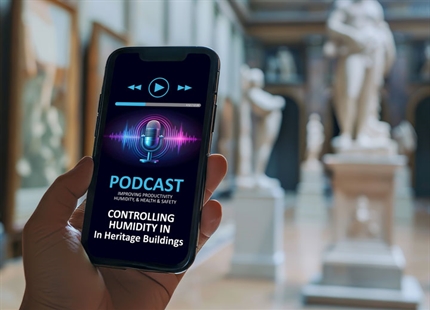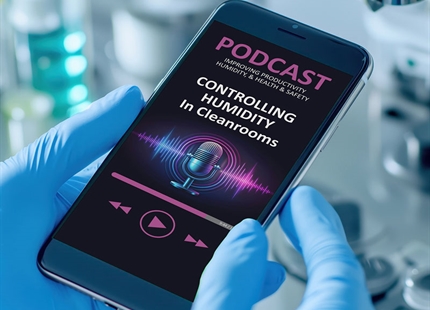07.03.2022
Study shows importance of humidity alongside ventilation
A recently published study¹ from the University of Oregon has demonstrated the effectiveness of ventilation, filtration and humidity to minimise airborne SARS-CoV-2 viral particles. For three days each, eleven COVID positive subjects undertook different activities in an environmentally controlled chamber. Levels of ventilation, air filtration and humidity were varied across the study period and the quantity of viral particles monitored in the air and on surfaces.
The researchers found that increasing ventilation and filtration significantly reduced the amount of SARS-CoV-2 viral particles in both the air and on surfaces. When humidity was increased, viral particles in the air reduced by half and caused an increase in viral particles on surfaces.
Tony Fleming, Head of Sales Cluster Northern Europe at Condair, commented, “This research is really significant as it’s the first study to demonstrate how air treatment strategies can impact the airborne transmission of COVID in a physical setting, rather than by computer modelling. The results justify the emphasis placed on increased ventilation by the authorities but it also highlights the need to humidify our public buildings. Official advice on humidification has been greatly lacking. The recently updated Part F of Building Regs totally ignored the issue of low indoor humidity and the health benefits of maintaining a mid-range 40-60%RH.
“The fact that increasing room humidity in this study resulted in 50% less airborne viral particles and increased levels on surfaces, shows that humidity plays a major role in determining how long viral particles remain airborne. Dry air causes an increased “float time” for the aerosols we all release. As airborne transmission has been shown to be the major COVID transmission route, humidification of places like hospitals, offices and schools is a practical mitigation strategy to reduce the risk of airborne cross infection.” Tony Fleming concluded.
Dr Van Den Wymelenberg, architecture professor and director of the Institute for Health in the Built Environment at the University of Oregon, was the senior author of this new study. He commented, “Intentional humidification is not often incorporated into indoor spaces due to cost or maintenance concerns, but should be considered, since it can support increased viral particle deposition, as shown in this study, as well as support our bodies’ natural defence mechanisms by reducing the drying of our mucus membranes.”
The study also concluded that the amount of viral particles in the air was not very different at 4ft (1.2m) from the infected subjects to 11ft (3.3m) from the subjects. This casts some doubt on the practical effectiveness of one or two-metre rules implemented under social distancing guidelines.
1) Parhizkar et al. 2022, Quantifying Environmental Mitigation of Aerosol Viral Load in a Controlled Chamber With Participants Diagnosed With Coronavirus Disease 2019. https://doi.org/10.1093/cid/ciac006.

Tony Fleming, Head of Sales Cluster Northern Europe at Condair Ltd, "...humidification of places like hospitals, offices and schools is a practical mitigation strategy to reduce the risk of airborne cross infection."
For three days each, eleven COVID positive subjects undertook different activities in an environmentally controlled chamber. Levels of ventilation, air filtration and humidity were varied across the study period and the quantity of viral particles monitored in the air and on surfaces.












